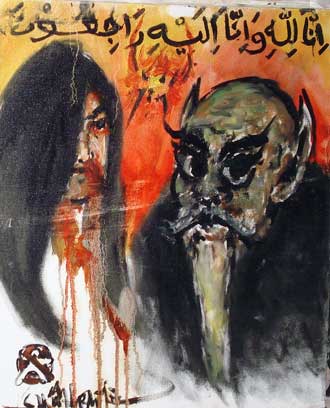Mythical Creatures of the Nusantara Beautifully Reimagined
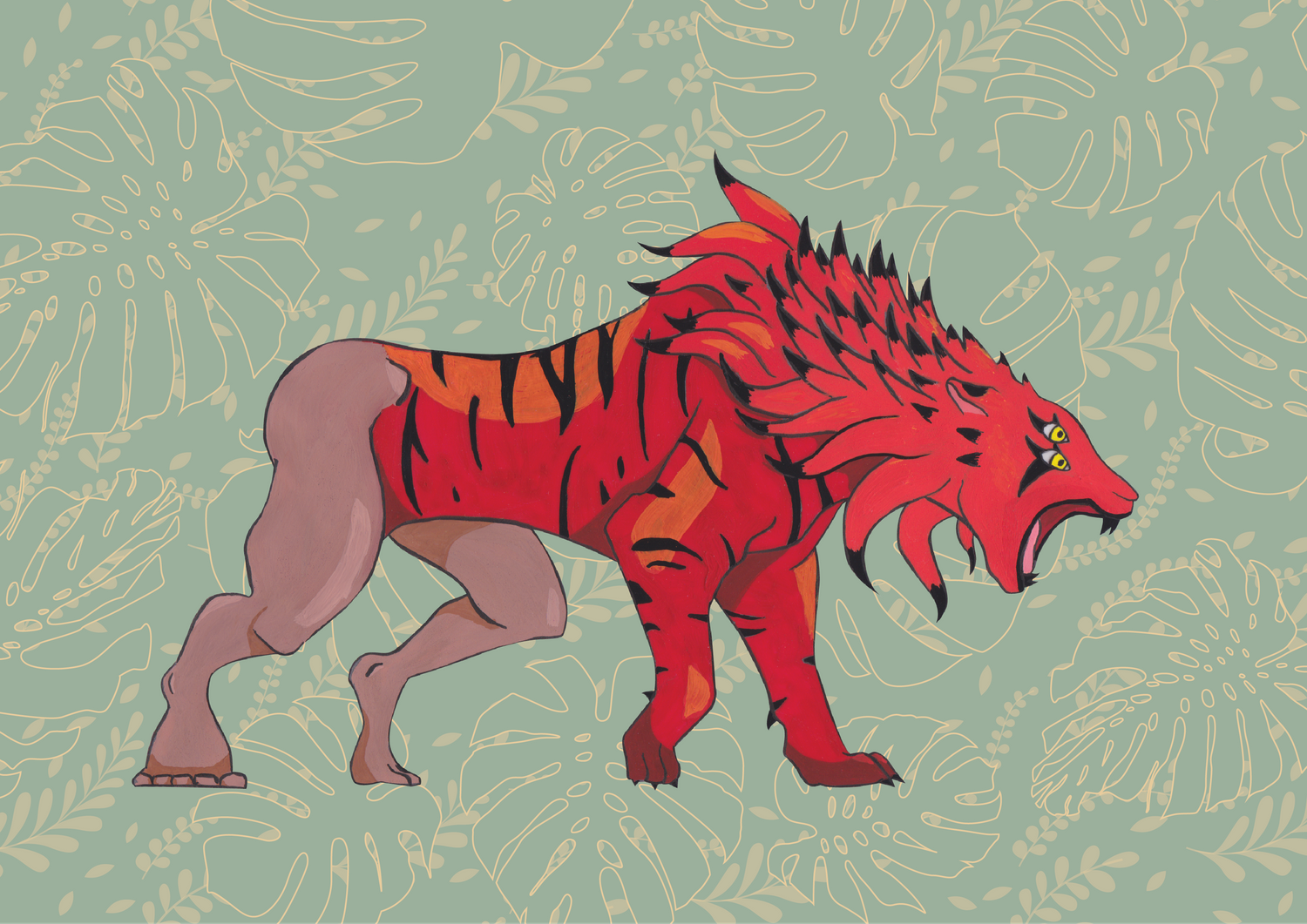 Thirsty for JUICE content? Quench your cravings on our Instagram, TikTok and WhatsApp
Thirsty for JUICE content? Quench your cravings on our Instagram, TikTok and WhatsApp
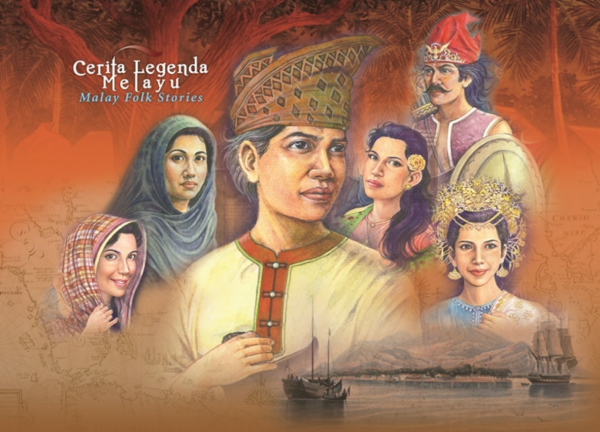
When Malaysians think of folklore, what mostly comes to mind are epic tales of mighty warriors defending the nation by duking it out with invading forces, defending the honour of the sultan by butting heads with a former friend (#teamjebat) or mystical puteri-s (princesses) who’d place a curse upon the land after being wronged, to name a few examples.
On the spookier end of the spectrum, we’ve got an abundance of stories featuring hantu-s (ghosts). From frighteningly hideous djinns, the bomohs (shamans) who summon them to the poor victims who get santau-ed (cursed) and all that good stuff. However, there’s so much more to Malaysia’s rich history of folk tales than just the aforementioned topics.
Take stories of mythical creatures for example. It’s no mystery that we’ve got our own assortment of these tales which served as the inspiration for local graphic designer, Jin Tee, to reimagine various beasts from classic folk tales into breathtaking illustrations suited for a contemporary audience.
Additionally, every creature illustrated has a distinguishable ‘eye marking’ which carries a different meaning for each respective beast.
1) Sang Bagas ‘the Strong’ (Weretiger)
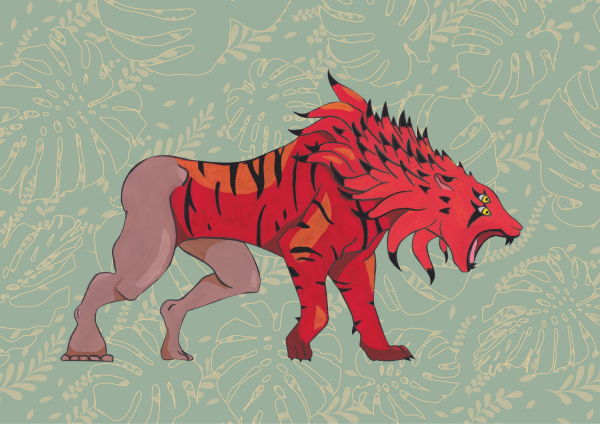
Jin Tee posted on the website O For Other describing Sang Bagas as a “powerful, proud and haughty” being that was once a man who could transform into a tiger at will who used this power to defend his village from actual tigers and for this brave act, was heralded as a protector. Unfortunately, this magic would cause the wielder to lose their humanity should they remain in their tiger form for too long.
In one instance, a tiger the size of an elephant attacked Sang Bagas’ village, so he transformed and ferociously defended his home. The battle lasted for three days and three nights before the colossal attacking tiger was defeated. At this point, Sang Bagas was confined by his own magic, stuck in a half-human, half-tiger form, unable to revert back to its human form completely.
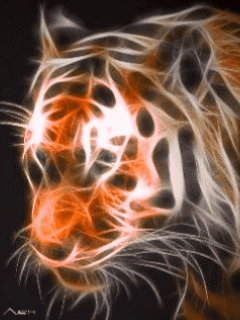
“Wide-chested, fanged and clawed, but attached at the waist to the slim rump of a human”, the weretiger grew ashamed of its deformed appearance. Many villagers were fearful that Sang Bagas would completely lose all humanity and turn on them instead. To appease him, they offered praise and bowls of milk in hopes that he would remain as the village’s protector.
For generations, Sang Bagas defended the village whilst remaining out of sight. After the village perished, the beast continued roaming the Malay archipelago. It is said that Sang Bagas can be summoned to do your bidding only if he is appealed by what is offered. If successfully called upon, the summoner must perform certain daily tasks and failure to do so can result in serious harm to its caller.
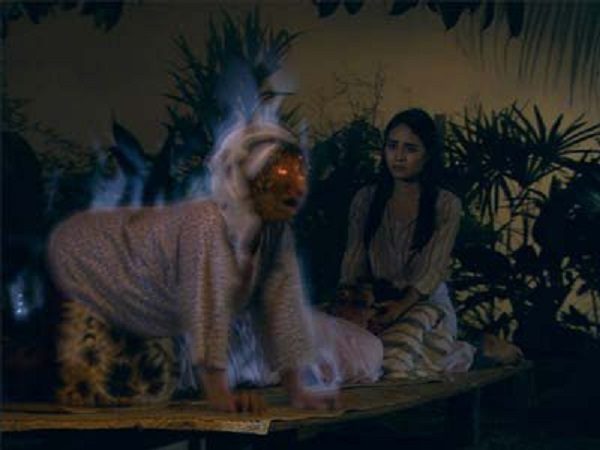
Jin Tee explained that her inspiration for recreating the Weretiger was based on “a story in William Skeat’s 1900 book, Malay Magic. A seminal work of a colonial officer on magic in the peninsula, the book was an attempt to rationalise and document “real” folk beliefs in the form of an ethnographic portrait of rural Selangor.”
2) Yani ‘the Searcher’ (Pangolin/Fish)
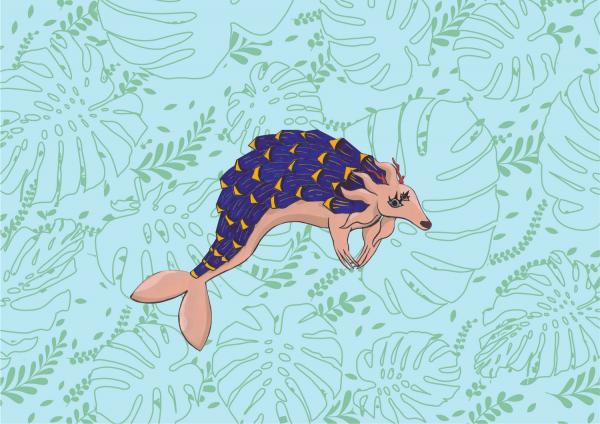
Yani is a celestial pangolin with powers that allow it to find “everything and anything”. This half pangolin-half fish hybrid possesses a “keen sense of smell and strong claws that can dig through anything” granting it the ability to unearth treasure from the very bottom of the sea or find a missing loved one. It also has impenetrable scales with tips that glow in the dark.
While harmless and timid in nature, Yani can be persuaded to come out of the sea by offering it a serving of candied ants. “Fill to the brim three bowls of ants. Add one cup of sugar and a quarter cup of water. Cook until a layer of crystallised sugar forms around the ants. Bring it to the coast and describe that which you seek. Those who harm it (Yani) are said to never be able to find what they lost ever again.”
3) Mira ‘the Scholar’ (Sang Kancil)
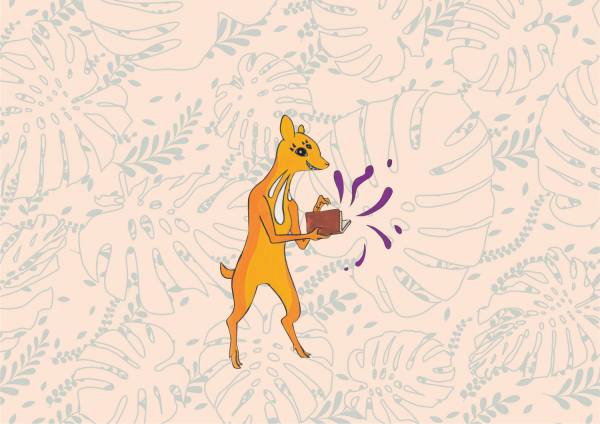
“The weredeer is quick and bright, with a needly smile. She is extremely knowledgeable and is an excellent strategist in all manner of things: from tomorrow’s exam to business deals, from where best to place your auspicious item to how to attract the eye of a love interest,” explained Jin Tee.
She continues to say that Mira is the same mouse-deer which inspired the founding of the Malacca Sultanate. After dodging Parameswara’s hunting dogs, she traversed the jungle and found herself in an ancient candi (Hindu or Buddhist mausoleum) which was dark and cramped with a leaky ceiling.
Still anxious from her pursuit, Mira stumbled into a hallway with a massive underground chamber, then knocked over an intricately carved box which emitted a blinding light. When vision returned to her eyes, “the world revealed all its secrets to her. It spoke to her from the draft blowing in from above, and following the smell of rain she emerged from the temple armed with a newfound power.”

This knowledge removed her timid nature allowing her to face difficult situations head on with immense confidence. She eventually became the advisor to a monarch, until he wanted to claim Mira’s wisdom as his own. After refusing to serve him, she lost access to the monarch’s library, and now spends the rest of her days “looking for new tomes to peruse and collect.”
It is said that the weredeer “cannot resist a book she has not read before, so to invoke it you must procure such book”, and that must be done at the “spine of the peninsula.” Mira is said to enjoy passing on knowledge in addition to gaining it. However, if one “exhausts her patience” she might answer the asker’s questions untruthfully.
4) Ilang ‘the Cloak’ (Tapir)

Resembling a young Malayan tapir, Ilang is able to instantly hide itself “by dissolving into the jungle floor”. Dubbed the protector of lost children, Ilang can only be seen by “the innocent and sinless”. Playful in nature, it will search for children who get lost in the jungle and play with them.
However, Ilang is fearful of adults and will cloak itself from their eyes. Adults who do manage to catch a glimpse of this creature will only see “a strange shimmering in the air”. Ilang’s purpose is to seek those who are lost and frightened and tend to their injuries. It will even tickle their faces with its nose to cheer them up.
When night approaches, Ilang will curl up around the wounded and provide them a “solace their homes could not”. As daylight breaks, Ilang will cast a spell that grants them invisibility as well, shielding them from the eyes of those who intend to do harm as well as adults. For these children, “the jungle will be their home, and Ilang their immortal playmate”.
5) Enggang ‘the Guide’ (Hornbill/Snake)
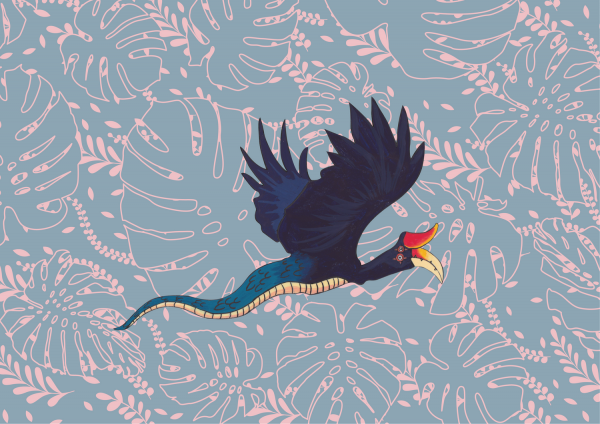
Enggang is a snake-hornbill hybrid which shares a similar appearance to regular hornbills but is equipped with a snake’s tail in place of clawed feet. Its teeth are pointy and its beak is lined but it “only sinks its teeth in fruits, not flesh”. The colour of its horn comes from all the fruits it devours.
When not in flight, Enggang will curl its tail around tree trunks while it sleeps with its beak tucked under its wings. Enggang’s size is debated with some claiming it to be small; just about the size of a regular hornbill while others (loggers in particular) claim that “its wings are large enough to blot out the sun and darken the skies, and makes a great show of baring its teeth.”
Many locals regard Enggang as “the jungle’s guide of the lost.” Some have claimed it to appear before explorers, helping them navigate through dense vegetation then back out to open trails. Unlike Yani, the pangolin-fish creature, Enggang is not fearful of humans. One way to distinguish it from normal hornbills is to spot its “muscular tail gripping the tree branch it is perching on.”
Fact or fiction? You be the judge.

Follow Jin Tee on Instagram for more cool drawings or check out her portfolio.
For everything in art, news, history and beyond, choose JUICE.

 Get Audio+
Get Audio+ Hot FM
Hot FM Kool 101
Kool 101 Eight FM
Eight FM Fly FM
Fly FM Molek FM
Molek FM
